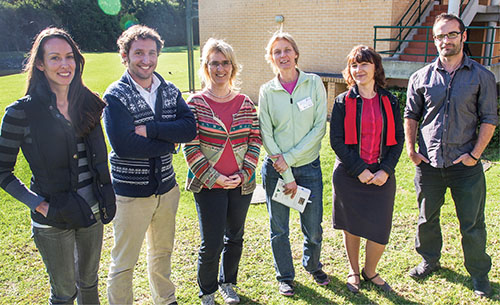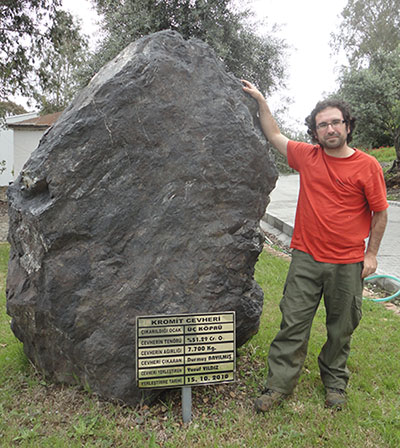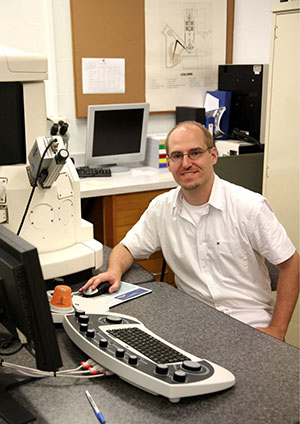Participants
Significant changes were made to the Chief and Associate Investigator (CI and AI) inventory based on new staff with new relevant expertise, and also on performance over the past 3 years. Four CIs have been added formally at the time of this Report, and three more CI additions are in progress, reflecting the CCFS achievements of three original CCFS Early-Career Researchers. Two CIs were changed to AIs reflecting one retirement and CCFS activity over the period. The current CI list reflects well the expertise and commitment spread needed to further the overarching vision and research goals of CCFS.
Organisations
Administering Organisation
Macquarie University (MQ)
Collaborating Organisations
Curtin University (CU)
University of Western Australia (UWA)
Partners
Australian Partner
Geological Survey of Western Australia
International Partners
CNRS and Université de Montpellier, France
Institute of Geology and Geophysics, Chinese Academy of Sciences, Beijing, China
University of Maryland, USA
University of Saskatchewan, Canada
Bayreuth University, Germany
Chief Investigators
Professor Suzanne Y. O’Reilly, Director - MQ
Professor Simon Wilde, Node Leader - CU
Professor T. Campbell McCuaig, Node Leader - UWA
Professor Mark Barley - UWA
Associate Professor Simon Clark - MQ (from 2014)
Professor Stephen Foley, Research Coordinator - MQ
Professor William Griffin - MQ
Professor Matt Kilburn - UWA (from 2014)
Professor Zheng-Xiang Li - CU
Associate Professor Alexander Nemchin - CU
Associate Professor Norman Pearson - MQ
Professor Simon Turner - MQ (AI from 2014)
Professor Martin Van Kranendonk - University of NSW
Partner Investigators
Australian Partner Investigator
Dr Klaus Gessner - Geological Survey of Western Australia
International Lead Partner Investigators
Dr David Mainprice - Montpellier
Professor Fuyuan Wu - CAS Beijing
Professor Michael Brown - Maryland
Professor Rob Kerrich - Saskatchewan (vale)
Professor Catherine McCammon - Bayreuth
Associate Investigators
Dr Juan Carlos Afonso - MQ
Dr Olivier Alard - Universite de Montpellier, France
Dr Leon Bagas - CET, UWA
Dr Elena Belousova - MQ
Dr Christopher Clark - CU
Assistant Professor John Cliff - CMCA UWA
Associate Professor Nathan Daczko - MQ
Professor Marco Fiorentini - UWA
Professor Simon George - MQ
Dr Richard Glen - NSW Geological Survey
Dr Masahiko Honda - Australian National University
Associate Professor Dorrit Jacob - MQ
Dr Mary-Alix Kaczmarek - CU
Dr Chris Kirkland - Geological Survey of Western Australia
Professor Jochen Kolb - Geological Survey of Denmark and Greenland
Professor Louis-Noel Moresi - (formerly Monash, now University of Melbourne)
Dr Craig O’Neill - MQ
Associate Professor Sandra Piazolo - MQ
Professor Steven Reddy - CU
Associate Professor Tracy Rushmer - MQ
Dr Bruce Schaefer - MQ
Professor Paul Smith - MQ
Dr Michael Wingate - Geological Survey of Western Australia
Dr Yingjie Yang - MQ
Professor Shijie Zhong - University of Colorado, Boulder, USA
ECSTARS
Dr José María González-Jiménez - MQ
Dr Yongjun Lu - UWA
Dr Takako Satsukawa - MQ
Dr Xuan-Ce Wang - CU
Early Career Researchers
Dr Leon Bagas - UWA
Dr Yoann Gréau - MQ
Dr Daniel Howell - MQ
Dr Jin-Xiang Huang - MQ
Dr Marek Locmelis - UWA
Dr David Mole - CU
Dr Edward Saunders - MQ
Dr Zoja Vukmanovic - CU
Dr Siqi Zhang - MQ
plus the ECSTARS (above)
A full list of CCFS participants is given in Appendix 4 and at http://ccfs.mq.edu.au/Participants/Participants.html
NEW STAFF
Professor Stephen Foley joined the CCFS in April 2013 after spending 9 years as Professor in Mainz, Germany, where he also led the Earth System Science Research Centre Geocycles since its inception in 2005.
He studied internationally – BSc in England, MSc in Canada and PhD in Tasmania – before taking up a post-doc position at the Max Planck Institute for Chemistry and staying in Germany for the next 26 years.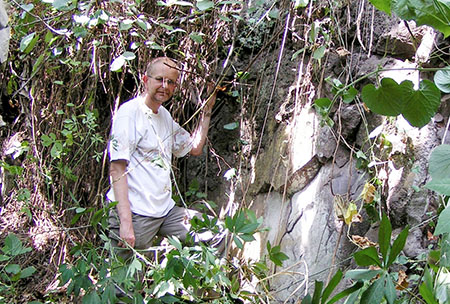
His main research interests are in igneous petrology, particularly the composition and geodynamic effects of small melt fractions in the mantle, and in geodynamic processes on the early Earth. He began his career with a petrological and geochemical study of an alkaline dyke complex in Labrador, before branching into experimental petrology, studying the then newly discovered diamond-bearing lamproites during his PhD. Since then, he has broadened his interests, continuing experimental work on trace element partitioning using a combination of high-pressure experiments, ion microprobe analyses of trace elements, and single-crystal structure refinements of tiny experimental crystals.
Field based studies around the world have included intrusive complexes in Siberia, alkaline igneous rocks in Labrador and Uganda, Archean basement rocks in Finland and Uganda, and volcanic rocks in Spain. Through the interdisciplinary Geocycles Research Centre, he has also become involved in Anthropocene studies and the composition of atmospheric aerosols.
In the CCFS, he has taken up the role of Research Coordinator, and will inject his petrological knowledge into several Foundation Projects, particularly those looking at enrichment processes in the mantle lithosphere and its stabilisation. He will also work on expanding the experimental capabilities of the CCFS, enabling study of the lithosphere and deep mantle. See Research Highlight - Trace elements in olivine are scouts for subducted continental crust in the source regions of magmas
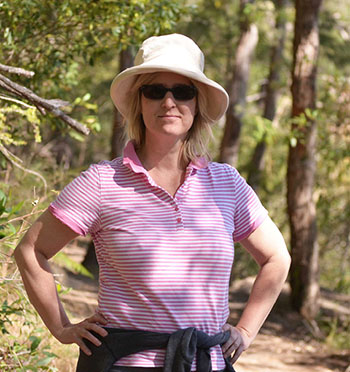
Associate Professor Dorrit Jacob moved into the geosciences after being stimulated by lectures on cosmochemical themes from international celebrities whilst she was working as a chemical laboratory assistant at the Max Planck-Institute for Chemistry. She then studied mineralogy and geology at the University of Mainz, followed by a PhD at the University of Göttingen in 1995 for work on the geochemistry and radiogenic isotopes of mantle eclogites. She moved to Mainz in 2004 after a few years in Greifswald, and here she extended her research fields to biomineralisation, steadily building up her own research group in this field from 2006 onwards. This led to national recognition by the award of a Heisenberg Chair in Biomineralisation in 2012. However, Dorrit chose to leave this full professorship after just five months to take up an ARC Future Fellowship at the CCFS as an Associate Professor at Macquarie University in April 2013.
In her research, she continues to combine the unlikely duo of biomineralisation and diamond research with her expertise in micro-geochemistry and nano-methods such as Laser-Raman spectroscopy and FIB-TEM.
In her Future Fellowship project, she is studying the structure, chemistry and mineralogy of the skeletons of marine organisms in order to characterise their growth environments. This includes understanding the effects of physiological processes on the composition of biominerals to be characterised, unlocking the door to a real understanding of paleoclimate information that can be won from this skeletal material. The project uses a multi-technique approach, combining innovative cutting-edge in-situ analytical methods with culture-growth experiments and field studies. The robust links that biomineralisation studies will provide between environmental conditions and biomineral nanostructure will enable new tools for the analysis of paleoclimate and past environmental change. See Research Highlight - Diamond growth at the nanoscale - Mantle fluids at work

Associate Professor Simon Clark took up his jointly funded position, (ANSTO and Macquarie), in the Department of Earth and Planetary Sciences at Macquarie University at the beginning of September 2012. Prior to that he led the high-pressure program at the Advanced Light Source, Lawrence Berkeley National Laboratory, Berkeley, USA and held an adjunct Associate Professorship in the Department of Earth and Planetary Science, University of California, Berkeley.
In 2013 he became an Associate Investigator in CCFS and will become a Chief Investigator in 2014. Simon’s research uses X-rays and neutron scattering and imaging, coupled with high-pressure and high-temperature devices, to recreate Earth processes in the laboratory. His current research interests are centred on understanding the role of melts and volatiles in Earth structure and dynamics. This directly links to the major themes of CCFS. The facilities for non-ambient studies that he is developing in the laboratory at Macquarie University, at the Australian neutron source, OPAL, and at the Australian Synchrotron will enable a new range of experiments, complementary to current CCFS capability, to be carried out. His interests and expertise will add a new dimension to the topology of the CCFS research landscape enabling more complete descriptions of melt and fluid systems in the Earth. In addition Simon’s half time appointment with the Australian Nuclear Science and Technology Organisation, managers of the Australian neutron and synchrotron sources, is facilitating the expansion of CCFS science into the major Australian central research facilities.

Dr Huaiyu Yuan (aka H.Y.) joined CCFS in April 2013, and is based at CET (UWA), employed at Macquarie and interacts closely with GSWA. Huaiyu’s research focuses on craton evolution using conventional earthquake seismology imaging techniques, including body/surface wave tomography, receiver functions, and shear wave splitting. During his PhD at the University of Wyoming, USA, Huaiyu constructed crustal and upper mantle seismic images of the Wyoming craton, and inferred information regarding craton formation and its interaction with subsequent tectonic activity such as rifting, subduction and most recently the Yellowstone hotspot system. After graduation in 2007 Huaiyu moved to the University of California, Berkeley as a post-doc and was then promoted as an assistant researcher at the Berkeley Seismological Laboratory. There he enhanced his seismic toolbox with surface wave full waveform tomography, and discovered wholesale upper mantle anisotropy stratification in the North American craton, a prominent feature that was proposed to mark episodes of tectonic history in the craton formation and evolution.
Huaiyu’s current projects include exploring the anisotropy layering in other cratons globally. He is interested in the structure of oceanic lithosphere, particularly the Pacific. He is also working on projects related to crustal and upper mantle seismic structural imaging of the Western Australia craton and the craton margins, in collaboration with other researchers across CCFS and from the Geological Survey of Western Australia. Currently Huaiyu is working on a temporary broadband seismic deployment in the Capricorn region, which starts in March 2014 and will last for the coming 3 years. The results from the new deployment will help us understand how the different parts of the Western Australian continent fit together. Huaiyu is also collaborating with Professor Liang Zhao at the Institute of Geology and Geophysics, Chinese Academy of Sciences in his newly funded Chinese NSF proposal from 2014 to 2018, to study the lithosphere structure and tectonic evolution in the south China craton. See Research Highlight - Stretching, pushing or something else...
Other new staff (featured in our ECR section)...
Dr Leon Bagas - University of Western Australia, see below
Dr David Mole - Curtin University, see below
Dr Zoja Vukmanovic - Curtin University, ssee below
Dr Siqi Zhang - Macquarie University, see below
CCFS FUTURE FELLOWS
The application for the CoE CCFS foreshadowed that such a Centre of Excellence would become an attractor for rising stars and research leaders in relevant disciplines and fields of interest. The success of CCFS participants in the ARC Future Fellow rounds emphasises this role of our Centre in recruiting high-flyers at early to mid-career levels. Six Future Fellows (above, from left to right), Dr Heather Handley, Professor Marco Fiorentini, Associate Professor Dorrit Jacob, Associate Professor Sandra Piazolo, Dr Elena Belousova and Dr Craig O’Neill, have projects relevant to CCFS goals and are profiled in the Participants section of our previous reports (http://www.ccfs.mq.edu.au/AnnualReport/Index.html). One new Fellowship was awarded in 2013 to Dr Yingjie Yang.
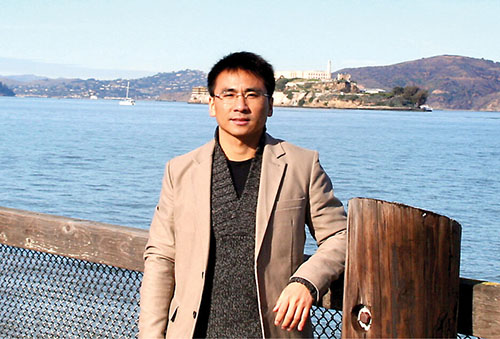
Dr Yingjie Yang is an observational seismologist. He took his Bachelor of Sciences from the University of Science and Technology of China in 2000. His PhD studies were done at Brown University majoring in Geophysics/Seismology during 2000-2005. Afterwards, he held research associate and senior research associate positions at University of Colorado at Boulder. In 2010, he moved to Macquarie University as a lecturer and in 2014, he will take up an ARC Future Fellowship. His primary research interests lie in understanding the structure, dynamics and deformation of the Earth’s lithosphere and upper mantle by studying seismic velocity, anisotropy, and attenuation using seismological techniques. His specific research topics include: ambient noise surface-wave tomography by extracting seismic Green functions from cross-correlating sequences of ambient or background seismic noise; teleseismic surface-wave tomography using earthquake data to constrain the seismic structure of lithosphere; joint inversion of multiple seismic data sets to improve the imaging of thermal and chemical status of the lithosphere and upper mantle.
In his future fellowship project, he will work on developing a novel seismological approach to map the small-scale dynamics of the upper mantle. The concept of small-scale convection currents about 100-400 km below the Earth’s surface has been proposed to explain the origins of intraplate volcanoes and mountains. However, direct evidence for the physical reality of small-scale convection cells is generally weak. This project will develop a novel seismological approach combining both random noise and earthquake data that can image such small-scale upper mantle convection. This project will help to fill the gap left in the Plate Tectonic paradigm by its inability to explain intraplate geological activity (volcanoes, earthquakes, mountains), which would be a significant step towards unifying conceptual models about how the Earth works.
EARLY CAREER RESEARCHERS (ECR)
The second primary goal of CCFS (see above) concerns the recruitment, development and mentoring of Early Career Research (ECR) staff “for the development of the next generation of Australia’s geoscientists”.
A Government White Paper in 2010 “Meeting Australia’s research workforce needs” stated that “There is a looming gap in the pool of potential leaders in geoscience research and training in Australia; the current crop of leaders is a senior generation, and there are few in the demographic down to people now in their 30s or younger. We need to bring some of this younger group along rapidly, and begin generating a new pool of potential leaders, to avoid a collapse in a research field that is essential to national wealth creation.”
As part of the solution to this problem, the CCFS proposal specifically targeted funding toward several outstanding ECRs newly employed at the partner institutions. It also foreshadowed that “the employment of… Centre-funded postdoctoral fellows will bring in young people with targeted expertise and potential, and develop them into the next generation of leaders in research and training.”
The initial awarded funding framework of CCFS resulted in a revision of the ECR recruitment capacity. However, the ARC provided an opportunity to apply for additional post-award funding dedicated to ECRs. The success of that application allowed CCFS to enhance the ECR training capability. It also represents a strategic intention to further expand our network of overseas investigators and to further enhance strands of research that currently are under-represented in Australia.
The post-award funding allowed the recruitment of three and one third postdoctoral fellows on terms analogous to the DECRA grants (ARC Discovery Early Career Researcher Award). These positions within CCFS have been named “ECSTAR”: Early Career Start-up Awards for Research.
The following profiles present 2013 ECRs (including the appointed ECSTARs in CCFS) and summarise their expertise and research areas.
New
Dr Leon Bagas has studied Archean and Paleoproterozoic terranes in many parts of the world. The majority of this work has been with Geological Surveys. He joined the Centre For Exploration Targeting (CET) at The University of Western Australia (UWA) in 2010, where he is leading studies of the tectonic evolution and economic geology of the North Australian Craton, Man Craton of Liberia (with the Liberian Geological Survey), North China Craton (with the Chinese Institute of Mineral Resources) and the Thrym Complex of southeastern Greenland (with the Geological Survey of Denmark and Greenland). These studies address the problem of deciphering the genesis of mineralisation through the lithosphere utilising detailed outcrop mapping, structural geology, geochemistry, isotope geochemistry, and geochronology. Leon has been collaborating with CCFS since 2011 through supervision of Honours and PhD students in Greenland.
His research focus has been in the Archean to Paleoproterozoic crust, which is very well endowed with a wide range of mineral deposits. The general lack of exposure of lower crustal rocks has led researchers and explorers alike to consider that the upper crust is the most common environment for mineral deposits and the lower crust is not prospective. However, many deposits are located near lithospheric-scale discontinuities through which metal species are carried from the mantle. In this context, the lower crust represents a key gateway between the mantle and the upper crust. Yet, very little is known about the lower crust, its architecture, and its metal endowment (predominantly due to the lack of exposure). The discovery of mineralisation in granulite-facies rocks of southeastern Greenland has cast some doubt on the idea that the lower crust is only a conduit for mineralisation that is eventually deposited in the upper crust, and this is a major focus for Leon’s current research.
Dr David Mole completed his PhD at the Centre for Exploration Targeting at the University of Western Australia (2012), investigating the effects of lithospheric evolution on the localisation of major komatiite flow-fields, and associated Ni-Cu-PGE mineralisation. He also has a Master’s degree in Geology from University College London (UCL) in the UK.
David joined Curtin as an industry-sponsored Research Associate investigating the multi-scale 4D evolution of the Proterozoic Ntaka Hill Ultramafic Complex in the Mozambique Belt of south-east Tanzania. The project uses a variety of geochemical and isotopic techniques to understand the tectono-stratigraphic evolution of the Ultramafic Complex and high grade (granulite-amphibolite facies) metamorphic host rocks. The genesis, localisation and internal architecture of the intrusion are also investigated using 3D modelling and geochemical methods, in order to understand the orthomagmatic Ni-Cu mineralisation associated with the mafic-ultramafic sequence. The project is sponsored by IMX Resources and affiliated with the Centre for Exploration Targeting, UWA.
David’s expertise primarily lies in using isotope geochemistry (particularly Sm-Nd and Lu-Hf isotopes) and U-Pb geochronology to understand the 4D evolution of crustal terranes. He is also interested in the application of this 4D lithospheric understanding to the evolution of multiple geological systems within a given terrane, such as structural regimes, volcanism, sedimentary facies and mineral systems. In addition to crustal-evolution work, David is particularly interested in the evolution of the primordial Earth (Hadean-Archean) and how different Earth systems such as the surface (atmosphere, oceans, crust) and internal (core-mantle) environments were affected by major temporal changes in geodynamics and crustal evolution. He is also interested in how the secular evolution of these reservoirs and processes affected the establishment of the current Earth and the development of life. Through his Master’s and PhD projects, David also acquired an avid interest in fundamental igneous processes, including the physical emplacement of magmas, their geochemistry and volcanology, as well as the internal architecture of igneous systems and its influence on orthomagmatic mineralisation. See Research Highlight - Diamond growth at the nanoscale - Mantle fluids at work
Dr Zoja Vukmanovic joined Curtin University after completing her PhD at the University of Western Australia studying the microstructure of magmatic sulfides from the Bushveld complex, South Africa and komatiite hosted Ni deposits from Western Australia. Before this, she received her Master’s degree from the Free University, Amsterdam, Netherlands.
As a research associate, she will investigate the nature and exhumation of the La Balma Monte Capio intrusion in Italy’s Ivrea-Verbano Zone from a geochemical and microstructural perspective, in order to constrain the interaction between deformation and fluid flow. She will study the relationship between intragrain and intergrain deformation processes and chemical reactions associated with hydration of the mantle. The outcomes will improve our understanding of the role of metasomatic fluids at lithospheric conditions on Ni-Cu-(PGE) sulfide mineralisation.
Zoja’s research interests are focused on ultramafic and mafic systems and associated ore minerals. Her expertise lies in high-precision in-situ mineral chemistry (EMPA and LA-ICP-MS) and rock microstructures (EBSD). She also uses 3D imaging (X-ray computed tomography) in order to better understand problems such as trace element remobilisation, metal endowment and post-crystallisation deformation. Apart from mantle geology, Zoja is interested in layered intrusions and the role of post-emplacement events on the crystallisation of the magmatic column. See Research Highlight - Size matters for ion mobility in deformed Ni-sulfides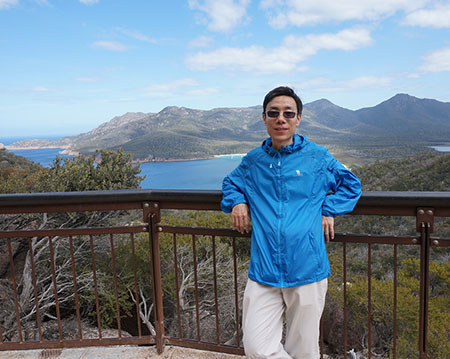
Dr Siqi Zhang completed his undergraduate study at Peking University, Beijing, and graduated with a PhD from the University of the Chinese Academy of Science (July 2011). He then took up a postdoctoral fellowship at University of Chinese Academy of Science from 2011 to 2013. His research focuses on using high performance computation with high resolution models to solve different geodynamic problems. One of his studies on lithosphere mantle coupling under Tibetan region using numerical simulation suggests that mantle flow is playing an active role during the collision of the Eurasia and Indian plates. He also makes contributions to numerical computation method development on parallel computing. He and his colleagues developed a novel method to calculate the co-seismic deformation, reducing the complexity of model construction and improving the accuracy of far field results.
He joined CCFS as a postdoctoral research associate in April 2013. Since then his research has been focused on using high resolution mantle flow models to study the evolution of Earth and other terrestrial planets. He built a mantle-core coupling model to study the early evolution of Mars. He is also exploring the construction of an Earth mantle-flow model taking into account the plate motion in the past few million years to recover the mantle structure and to track its evolution over that time. See Research Highlight - Mantle dynamics model constrained by plate history
Continuing
Dr José María González-Jiménez is a geologist/mineralogist specialising in the mineralogy and geochemistry of the Platinum-Group Elements (PGE), especially in ore deposits associated with mafic/ultramafic rocks. He received his PhD from the University of Granada (Spain) in 2009, having investigated the mechanisms of concentration and remobilisation of PGE in ore deposits from ophiolite complexes in Cuba, Bulgaria and New Caledonia. His research is focused on the mineralogy and geochemistry of the PGEs, to find out how these noble metals are concentrated into economic deposits in Earth’s upper mantle and how they are re-mobilised during post-magmatic events. His work as a Research Fellow at CCFS has taken several new directions. One is the application of Re-Os isotopic systematics to the Platinum-Group Minerals (PGM), using in-situ microanalysis by LA-MC-ICPMS; another is based on the analysis of trace-element patterns in chromite from different styles of magmatic deposits. Combining mineralogical, petrologic, geochemical, isotopic and thermodynamic approaches, he is modelling the mechanism(s) of magmatic concentration of the Platinum Group Metals and chromium. This work is providing an improved explanation for the genesis and tectonic setting of PGE-bearing chromite deposits. Another relevant aspect of his work at CCFS is a statistical study of the size distribution of the PGM in different microstructural settings and the characterisation of their Os-isotope composition. This has led to the discovery that the PGE can be re-mobilised/re-concentrated by the hydrothermal/metasomatic fluids that commonly affect lithospheric mantle rocks. This process also affects the Os-isotope signatures of Os-rich minerals, in contrast to accepted ideas about the stability of the Re-Os isotopic system in the mantle. See Research Highlights - The riddle of the origins of xircon in ophiolitic rocks..., Fluid-induced deformation during metamorphism, The enigma of chromitites in the upper mantle resolved, Why hasn't the Mediterranean Basin closed?
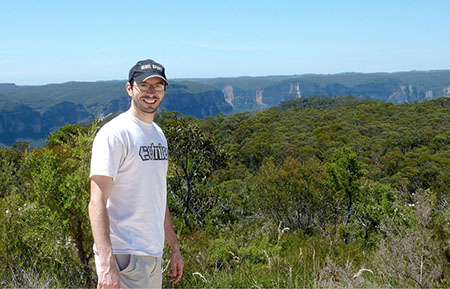
Dr Yoann Gréau joined GEMOC in 2007 as a PhD candidate (graduated 2011) after obtaining an MSc from the University of Montpellier II (France), where he trained in ultramafic petrology and geochemistry, studying ultra-refractory abyssal peridotites. During his PhD studies, he investigated the origin and history of eclogite xenoliths brought up from the lithosphere-asthenosphere boundary by kimberlitic magmas. His research focused on the petrology and geochemistry of the sulfide phases, looking at siderophile and chalcophile elements (e.g. Cu, Ni, Se, Te, PGEs and S isotopes). He also investigated the relationships between microstructures and mineral geochemistry (e.g. REE, HFSE, LILE and O isotopes) of the main silicate phases, demonstrating strong links between mantle eclogites and metasomatic processes occurring within the sub-continental lithospheric mantle.
In 2013 Yoann co-managed the TerraneChron® team in CCFS. TerraneChron® uses a specifically developed methodology to study the evolution of the continental crust through time by using integrated in-situ analysis of zircons for U-Pb ages and O- and Hf-isotope composition. The methodology, developed at Macquarie University, has had great success with our industrial and geological survey partners; it provides the partners with information useful in their mapping and exploration programs, and gives the team valuable data for large-scale research. In 2013, TerraneChron® imaged and analysed 3463 grains of zircons for a total of 23 different projects from different regions of 4 continents.
Dr Dan Howell is a postdoctoral research associate in CCFS working on the growth, structure and origins of diamonds, a unique recorder of mantle fluid activity. By studying fluid and mineral inclusions trapped within them, this robust capsule mineral can provide direct samples from the depths of the Earth. Publications in 2013 showed how laser ablation ICPMS analysis (developed at MQ) of trace elements in clean, gem-quality diamonds has revised our understanding of how transition metals (like nickel and cobalt) can be present during natural diamond growth (CCFS publication #332). He is also investigating the similarity of pink diamonds from Argyle (Australia) to those found in Santa Elena (Venezuela), as well as reporting a new finding in southern Africa. His research is also contributing to the TARDIS project by documenting the characteristics of diamonds found in Tibetan ophiolites, and understanding their formation conditions in this new environment for diamond occurrences. See Research Highlight - Detecting diamond distillation of nitrogen....

Dr Jin-Xiang Huang completed her undergraduate study at China University of Geosciences, Beijing as one of the top students in her class. She received her PhD from Macquarie University, in December 2011 with a study of the metasomatism and origins of xenolithic eclogites from the Roberts Victor kimberlite, South Africa. This gave her extensive experience in the clean labs and on state-of-art instruments to produce precise geochemical data, and in integrating a wide range of information into a coherent model. She discovered that mantle metasomatism has completely changed the petrography and chemical and isotopic compositions of most eclogites. The evidence from these thus cannot be used to support the popular idea that they represent subducted oceanic crust. Information from primary eclogites favours their origin from deep-seated magmas. After completing her PhD, she joined CCFS as a post-doctoral research associate, to work on the oxygen and magnesium isotopes of mantle rocks (both eclogites and peridotites) and in different mantle processes (e.g. magma crystallisation, mantle metasomatism). This will provide a better understanding of mantle processes and further constraints on geodynamics.
In 2013, she was developing the chemical method to purify Mg for isotopic analysis by MC-ICPMS. The Mg isotopic heterogeneity of garnet from the xenolithic eclogites will provide further information on eclogite origins and isotopic fractionation processes in the mantle.
Dr Marek Locmelis is a Research Assistant Professor in the CET working on the CCFS foundation project “Metal sources and transport mechanisms in the deep lithosphere”.
In 2013, Marek continued his research on the processes that lead to mass transfer of fluids and metals between the mantle and the crust. His work integrates (i) a series of hydrous high-pressure and high-temperature experiments to investigate the capacity of near-solidus melts and fluids to transport metals at lithospheric mantle-asthenospheric conditions, with (ii) the analysis of rock samples collected from the Ivrea-Verbano Zone (IVZ) in northwest Italy. This exhumed section of the critical crust-mantle interface shows tantalising relationships between ultramafic fluid-rich rocks and metal-rich sulfide mineralisation, making the Ivrea-Verbano Zone an excellent natural laboratory to test and parameterise the high P/T experiments.
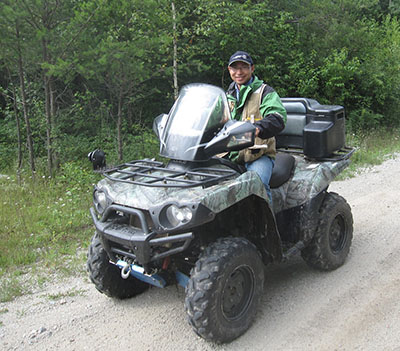
Dr Yongjun Lu is a Research Associate funded by an ARC ECSTAR Fellowship in CCFS. He is undertaking the CCFS Foundation Project “4D lithospheric evolution and controls on mineral system distribution: The Western Superior-Yilgarn comparison”. In 2013, Yongjun started supervising PhD student Katarina Bjorkman, who is studying the 4D crust-mantle evolution of the 3.0 Ga Marmion Terrane (Canada) as part of the Foundation Project. He also supervised honours student Lei Shi in 2013 with a thesis on a porphyry Cu deposit in the North China Craton. In addition to ongoing collaboration with the China Academy of Geological Sciences on the investigation of Tibetan porphyry systems, Yongjun also established collaboration with Iran to study the mineral systems in the Urumieh-Dokhtar magmatic arc, highlighted by arrival of Professor Hooshang Haroni at CET in 2013. Yongjun has been instrumental in the design and submission of a new $1.3M AMIRA proposal in late 2013, aiming to enhance predictive capability for magmatic-hydrothermal copper and gold exploration targeting. He is Deputy Theme Leader of the Magmatic Mineral Systems theme at CET and member in the Geoconferences Main Committee and the Strategic Planning and Implementation subcommittee of Geoconferences. He also serves as reviewer for international journals such as Economic Geology, Lithos, Gondwana Research, Mineralium Deposita, and Ore Geology Reviews. See Research Highlight - Giant porphyry copper deposits on the roof of the world.., Zircon signposts for gold
Dr Takako Satsukawa joined CCFS/GEMOC in October 2012 as an ECSTAR (Early-Career Startup Award Researcher) funded by an ARC Centre special grant to CCFS for early-career researchers. She completed her PhD jointly at Shizuoka University (Japan) and the Université Montpellier (France). Her dissertation research focused on microstructural and petrological characteristics of mantle-derived peridotite xenoliths in basaltic rocks and their implications for the evolution and seismic anisotropy of the uppermost mantle beneath the back-arc region. She mastered the application of Electron Backscatter Diffraction (EBSD) technology to measure the crystallographic preferred orientations (CPO) of individual grains of minerals. Her current research interests include the rheology of the uppermost mantle and the history of the roots of ancient continents to provide new constraints on the rheological properties of the lithospheric mantle.
Her research interests lie in developing a systematic approach to mapping the behaviour of melts and fluids in the upper mantle. Takako approaches this by combining microstructural analysis, analysis of water contents, numerical modelling of the seismic properties of individual samples, and geochemical analyses of xenoliths from different lithospheric levels which have experienced different degrees of melt-rock interaction. Since previous work by GEMOC has used geochemical analysis, a new methodology for mapping ‘hidden’ microstructures can be developed by combining these approaches.
In 2013, she characterised the microstructure of mantle-derived rocks from the Japan arc to investigate the uppermost mantle evolution during the initial stage of back-arc spreading. She presented her work at the Goldschmidt conference 2013 in Florence and the 19th International conference on Deformation Mechanisms, Rheology and Tectonics in Leuven.
This project is part of CCFS Themes 2 and 3, Earth Evolution, and Earth Today, and contributes to understanding Earth’s Architecture and Fluid Fluxes. See Research Highlight - Fluid-induced deformation during metamorphism
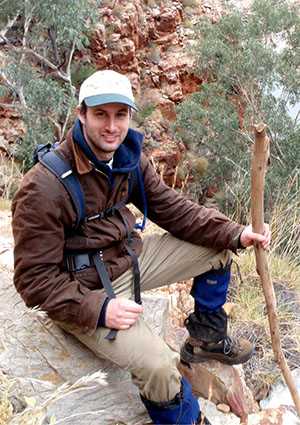
Edward Saunders completed his BSc (Hons) with a major in geology at the University of Western Australia in 2006. After graduation, he worked as an exploration geologist for a junior mining company in the Pilbara region for three years before commencing a PhD with GEMOC/ CCFS in 2010. His PhD investigated the nature, abundance and mobility of gold in the upper mantle. This research focused on in situ analysis of sulfide grains in upper mantle peridotites, and found that gold was very heterogeneously dispersed as a result of its mobility in fluids. These results are important for understanding sulfide metasomatism in the upper mantle, and the role that process plays in ore systems and ore formation processes. This has important implications for understanding the fluid flux within the lithospheric mantle. Ed completed his thesis in 2013, and he presented some of the results at the Goldschmidt Conference in August.
In 2014, Ed commenced employment at Macquarie University as a lecturer and is an early career researcher in CCFS. He is teaching and convening a number of undergraduate- and masters-level courses while continuing his research with CCFS into the mobility of chalcophile elements in the upper mantle. See Research Highlight - Mantle's golden secrets sparkle
Dr Xuan-Ce Wang joined CCFS in 2011 as a postdoctoral research fellow at Curtin University. His primary role in CCFS is to examine linkages between plate tectonics and mantle plume dynamics, to test the effects of deep water cycling on the thermal evolution of the Earth’s mantle, and to identify evidence for plume-related magmatism in Australia and other continents.
In 2013, Dr Wang and his collaborators defined the Gnowangerup–Fraser Dyke Suite, a major part of the 1.21 Ga Marnda Moorn large igneous province (LIP) of the Yilgarn Craton (CCFS publication #371). They also identified an ancient mantle reservoir, formed at ca 4.5-4.4 Ga, in both the 60 Ma old Baffin Bay lavas (CCFS publication #354) and late Cenozoic basalts in the Hainan-Leizhou peninsula, the Indochina peninsula and South China Sea seamount (CCFS publication #336). This ancient mantle reservoir is chemically heterogeneous, containing at least two (depleted and enriched) end-member components (CCFS publication #354), and shows that the chemical effects of early differentiation can persist in mantle reservoirs to the present day. These studies have provided a potential breakthrough that links generation, preservation, and sampling of early reservoirs into a self-consistent Earth system. These projects are part of CCFS Theme 2, Earth Evolution, and contribute to understanding Earth’s Architecture and Fluid Fluxes. Wang and Associate Professor Jie Li of Guangzhou Institute of Geochemistry, (CAS) also demonstrated an improved procedure for determination of platinum-group elements and Os isotopes by isotope dilution using inductively coupled plasma-mass spectrometry and N-TIMS ( CCFS publication #338 ) and a novel preconcentration method for determination of Mo isotopic composition of geological samples by MC-ICPMS (CCFS publication #369).
See Research Highlight - New insights nto the Earth's early differentiation
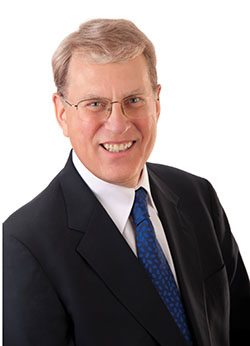
VALE - CCFS PARTNER INVESTIGATOR, PROFESSOR ROB KERRICH (1948-2013)
The economic geology community suffered a tremendous loss with the passing of one of the giants of our profession, Professor Rob Kerrich on April 17th, 2013, after a long battle with cancer.
Born on December 15, 1948, in the UK, Rob received his BSc from the University of Birmingham in 1971, and a PhD from Imperial College, London, in 1975. He held a NATO postdoctoral fellow at the University of Western Ontario from 1975–1977, before joining the faculty in 1977. In 1987 Rob moved to the University of Saskatchewan as the recipient of the George J. McLeod Chair in the Department of Geological Sciences, a position he held until his passing. Rob was an inaugural Partner Investigator in CCFS, an Adjunct Professor at the University of Western Australia, and a strong contributor to CCFS research programs.
Among Rob’s many accolades were his award of a Steacie Fellowship in 1987, the GAC’s William Harvey Gross Medal in 1988, the CIM Distinguished Lecturer in 1989, the MAC Past President’s Medal in 1989, election as Fellow of the Royal Society of Canada in 1992, the Willett G. Miller Medal of the Royal Society of Canada in 1999, election as a Member of the European Academy of Sciences in 2001, the GAC Mineral Deposits Division’s Duncan Derry award in 2003, the Saskatchewan Centenary Medal in 2006, a Career Achievement Award from the Volcanology and Igneous Petrology Division of GAC, SEG’s Penrose Medal in 2011, and GAC’s Logan Medal in 2012.
Rob’s Impact on our profession has been enormous. Publishing over 300 papers, many of them benchmarks still heavily cited well over a decade after their publication (with >6000 citations), Rob was one of the most impressive innovators in geoscience. From an economic geology perspective, he continually demonstrated his holistic approach to mineralising systems, reaching far outside the field to bring advances from multiple science disciplines and apply them to the understanding of mineral deposits. Some of his contributions include: the chemistry and physics of shear zone development and dynamics of fluid flow through them; seminal work with Bill Fyfe on Yellowknife gold deposits that inspired all subsequent research on orogenic gold deposits; pioneering the development of the metamorphic model for orogenic gold deposits; pioneering the use of high-precision ICP-MS analyses of trace elements to constrain Archean geodynamics; the use of stable isotopes as tracers of fluid sources in mineral deposits; looking at lithosphere-scale controls on mineral deposits before it became popular, and placing mineral deposits through time in the context of the Earth’s evolving hydrosphere-biosphere-atmosphere-lithosphere system. He remained as prolific at the end of his career as he was at the beginning.
Moreover, Rob was a tremendous mentor, strongly influencing the careers of many of today’s top researchers and industry geoscientists. Many who came under his direct tutelage remark that they could not have imagined a more supportive and intellectually challenging supervisor. Rob relished this mentoring role throughout his career, and many people would share these reflections on his impact on their professional lives. In many ways Rob’s legacy lies even more in the scientists he helped to shape than in the world class science he undertook.
Rob mentoring students in the field.

 ARC Centre of Excellence for Core to Crust Fluid Systems
ARC Centre of Excellence for Core to Crust Fluid Systems